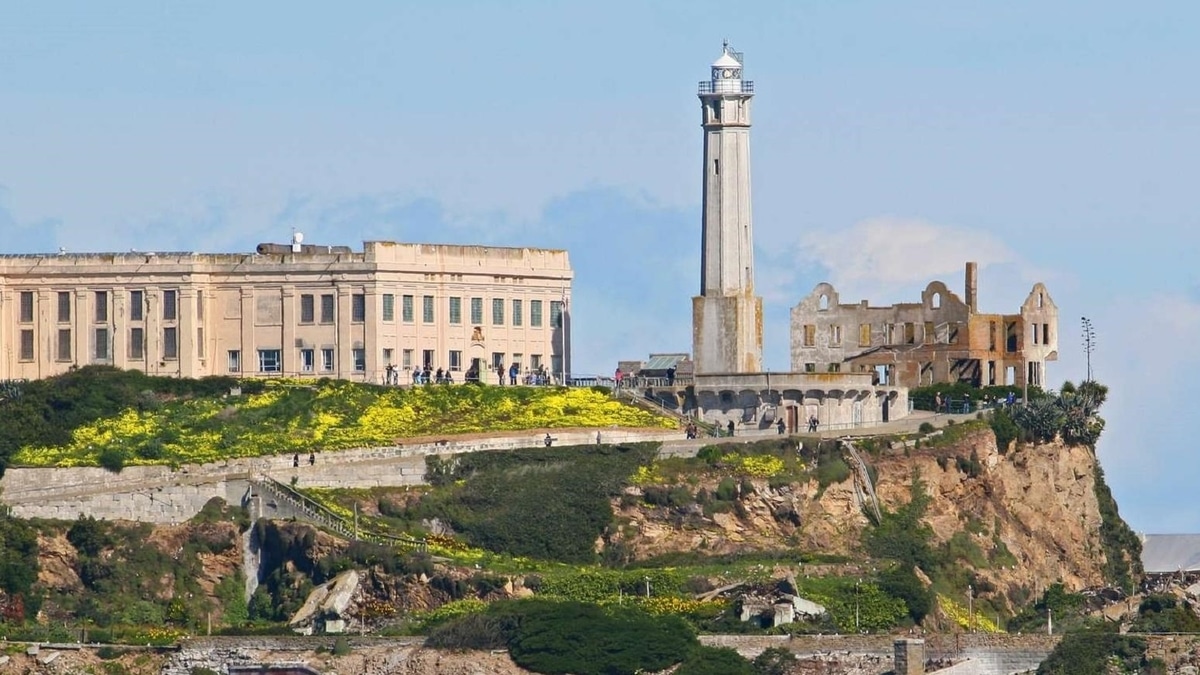
Alcatraz is one of San Francisco’s most exciting attractions. Here are some things you should check out on your next visit!
Alcatraz Island is an essential part of San Francisco’s history, having served in multiple different roles for generations of San Franciscans. It acted as a military base known as “Fort Alcatraz” during the Civil War, eventually housing a military prison until 1933. From 1934-1963, the island was home to the famous federal prison that housed Al Capone, Machine Gun Kelly, and other notorious criminals from across the US. It was later the site of a Native American civil rights movement (see below) before becoming part of the Golden Gate Recreation Area in 1972.
France
Alcatraz earned a spot on the National Register of Historic Places in 1976, and was recognized as a National Historic Landmark in 1986. It’s served as a public museum for decades and is accessible via a ferry from Pier 33 through Alcatraz City Cruises LLC.
In addition to the main prison and cell blocks which you can see during your tour, here are a few fascinating things to make sure you check out while you’re there!
1. Gardens
During the entirety of Alcatraz’s history, generations of people including soldiers, inmates, families of prison guards, and more have worked at cultivating gardens in the island’s rocky soil. After the island was neglected for four decades, the Garden Conservancy worked for 10 years to restore the gardens for visitors to enjoy. You can now see countless colorful plants including roses, naked ladies, bush daisies, treasure flowers, geraniums, and more. Find them throughout the island in places including the Cellhouse Slope, the Officers’ Row, and the west side gardens.
2. Nesting seabird sanctuary

Many visitors to Alcatraz are unaware that the island is home to a significant nesting seabird population, which is carefully counted and monitored as part of the Golden Gate National Recreation Area. Breeding birds on the island include cormorants, gulls, night herons, egrets, and pigeon guillemots. This makes Alcatraz a hotspot for birdwatchers everywhere, who can glimpse the seabirds’ activity up close. Grab a Birds on the Rock brochure at the Information Station upon arrival, and try to go in later winter or early spring for the best birdwatching.
3. Alcatraz Lighthouse

The Alcatraz Lighthouse is iconic in and of itself, as it’s one of the island’s most prominent features. But did you know that it was constructed in 1854, making it the first lighthouse ever built on the west coast? It served as a navigational beacon for 50 years, and has undergone several updates to make it taller and put in an automated, more modern beacon. The lighthouse is closed to the public, but you can’t miss it stationed right next to the Warden’s House.
4. Remnants from Native American civil rights movement

Starting in 1969, Alcatraz was occupied for 19 months by a group of Native American activists called the Indians of All Tribes. They called for establishing a cultural center and more there, citing the Treaty of Fort Laramie, by which the government had promised to return abandoned federal land to the tribes from whom the land was originally taken. After a long period of controversy, the government eventually forced the occupiers off the island. You can still see graffiti from this time on the water tower and at the entrance, plus the remains of several buildings that were destroyed in a fire (of disputed origins) during the time.
Despite the Occupation coming to an end, it is still considered an essential moment in drawing national attention to the problems faced by native peoples, initiating the Red Power movement across the United States.

